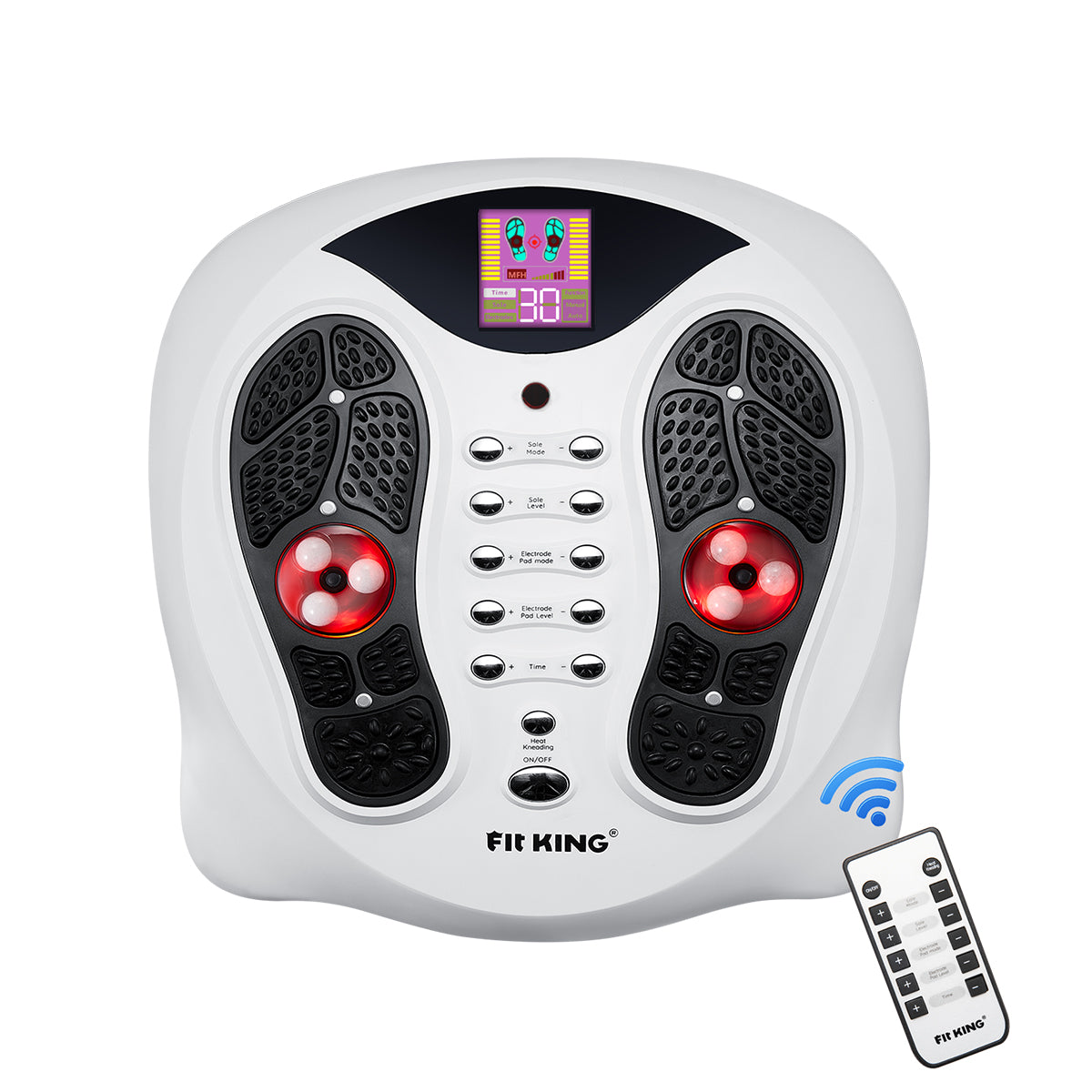TENS (transcutaneous electrical nerve stimulation) therapy and EMS (electrical muscle stimulation) therapy are two different types of electrical stimulation used in physical therapy and rehabilitation. TENS therapy delivers low-voltage electrical current to the skin through specially designed electrodes to block pain signals from reaching the brain. Electrical pulses help reduce pain and inflammation and relax muscles to promote healing. You can read more about TENS therapy in a previous issue. EMS therapy uses higher voltages to stimulate muscles to increase strength, improve endurance and motor control. The electrical impulses mimic the body's natural contraction signals, causing muscles to tighten and relax. In this article, we will learn about EMS therapy, and the difference between EMS and TENS, please read on.
How EMS works
EMS (electrical muscle stimulation) therapy is a type of physical therapy treatment that uses electrical impulses to stimulate muscles. It works by sending electrical stimulation to nerves in the targeted muscle group, causing the muscle to contract and relax in a way that resembles the natural contraction and relaxation cycle that occurs when a person performs voluntary activity. The goal of the therapy is to improve muscle strength, reduce pain, and promote healing in the muscle and surrounding soft tissue.
What EMS is used for?
EMS (Electrical Muscle Stimulation) therapy is used for a variety of conditions and treatments such as:
- Strengthen and tone muscles, improve blood circulation, and recover after injury or surgery.
- Reduce stress, stimulate endorphin production, and improve sleep patterns.
- Improve muscle strength, endurance, flexibility, and range of motion for strength training and sports performance enhancement.
- Reduce inflammation and shorten healing time, as well as relieve muscle pain, increase blood flow, and reduce the effects of aging.
- Treat a variety of conditions, such as muscle strain, foot pain, back pain, neck pain, sciatica, arthritis, tendonitis, and intervertebral disc problems.
What’s the Difference Between TENS and EMS?
Research has shown that EMS and TENS can both be effective for pain management. Additionally, a 2020 systematic review of 25 studies found that both EMS and TENS had a positive effect on musculoskeletal pain relief after 12 weeks of therapy. However, it is important to note that not all studies have had positive outcomes. Some have reported that EMS and TENS are not effective for certain conditions. It is best to talk to your doctor before starting any new form of treatment.
- Are they both safe to use?
These two electrotherapy techniques have been around for decades and are considered safe when used properly, but they can also cause side effects. For a safe and effective experience, it is important to ensure that the electrodes are placed correctly and that the intensity of electrical stimulation is within safe limits. It is also important to follow your healthcare provider's directions and discontinue treatment if any adverse reactions occur or pain increases. All in all, EMS and TENS are both safe to use when used according to their instructions within a program given by your healthcare provider. However, it is important to reduce the intensity or discontinue treatment immediately if you experience any unusual or uncomfortable sensations.
The FDA has approved the use of both EMS and TENS for pain relief and healing which are considered medical devices. This means that manufacturers of these devices must meet certain standards to sell them legally. Also, sellers cannot make false claims about the safety or effectiveness of these machines. TENS and EMS units that do not meet the FDA’s standards are illegal. They are more likely to pose safety risks.
Choose the right device
You can choose the appropriate product according to different needs,
the FITKING ft-036F Heated Foot Stimulator is an FDA-approved device with both EMS and TENS settings designed to elevate foot care with a soothing kneading massage that helps relax foot muscles. Please consult your healthcare provider or physical therapist before purchasing any equipment. They may recommend products or suggest other options based on your medical condition.
When shopping, take the time to evaluate the machine's features, such as:
- Battery life
- Portability
- Output intensity
Please check the seller's return policy and warranty options before purchasing. Also, be sure to only consider FDA-approved devices.
It is important to keep an eye out for any unsubstantiated claims related to these two types of machines.
In Summary
TENS and EMS are both non-invasive treatments that can help reduce pain and treat various musculoskeletal conditions. TENS works by blocking the transmission of pain signals, while EMS works by stimulating and strengthening the muscles. Ultimately, TENS and EMS provide similar benefits, but it is important to understand the differences between the two treatments before deciding which is best suited for any particular condition or situation. And before using a TENS or EMS machine, consult a healthcare provider to make sure these devices are well-suited to you and your needs.
















Leave a comment
This site is protected by hCaptcha and the hCaptcha Privacy Policy and Terms of Service apply.